Volcanoes are erupting in The Philippines, but on-fire Australia received some welcome rain. The Iran war cries have been called off and The Donald’s military powers are about to be hamstrung by the Senate. Meanwhile, his impeachment trial is starting, and we’re all on Twitter for a front-row seat.
What Could Go Right? Homelessness has not spiked
A dive into the numbers
This is our weekly newsletter, What Could Go Right? Sign up here to receive it in your inbox every Thursday at 5am ET. You can read past issues here.
Update:
This article was written using data from 2022. It compared numbers from 2007, when reporting began (647,258 total homeless) with 2022 (582,462).
With the release of the 2023 data, we can see that homelessness has spiked. We have regressed, surpassing 2007’s count with 653,100 total homeless in 2023.
Axios has the breakdown here.
Homelessness has not spiked
Editor’s note: It is now preferred by those working in the field of homelessness to refer to people as “unhoused” or “experiencing homelessness.” I don’t always follow this prescription in the article below, as it can make for convoluted writing, and many aren’t familiar with the updated terms. If you are, their non-use here is not meant as an expression of disrespect or dehumanization.
I lived in New York from the late aughts until the pandemic, so I’m no stranger to city living. Home for the holidays, however, I have been shocked not only by the number of homeless people here but also by their physical and mental condition. It is strikingly worse than what I remember.
Given the nature of The Progress Network, I am always skeptical of what the media calls a “crisis.” The word is thrown around entirely too much. I am skeptical, too, of anecdotal evidence. But since so much has been written about the United States’ homelessness crisis, since the rent is definitely too damn high, and since real-world experience is hard to ignore, I assumed this was an instance where “crisis” fits the bill.
So I was surprised again, this time by the numbers, when I went looking for them. Data for 2023 aren’t out yet, and comprehensive data do not exist for 2021 due to the pandemic. But in 2022, according to the Department of Housing and Urban Development (HUD)’s annual report on homelessness, the homelessness rate remained steady at .18 percent of the American population. Homelessness has increased since 2016, but decreased since 2007 by over 64,000 people.
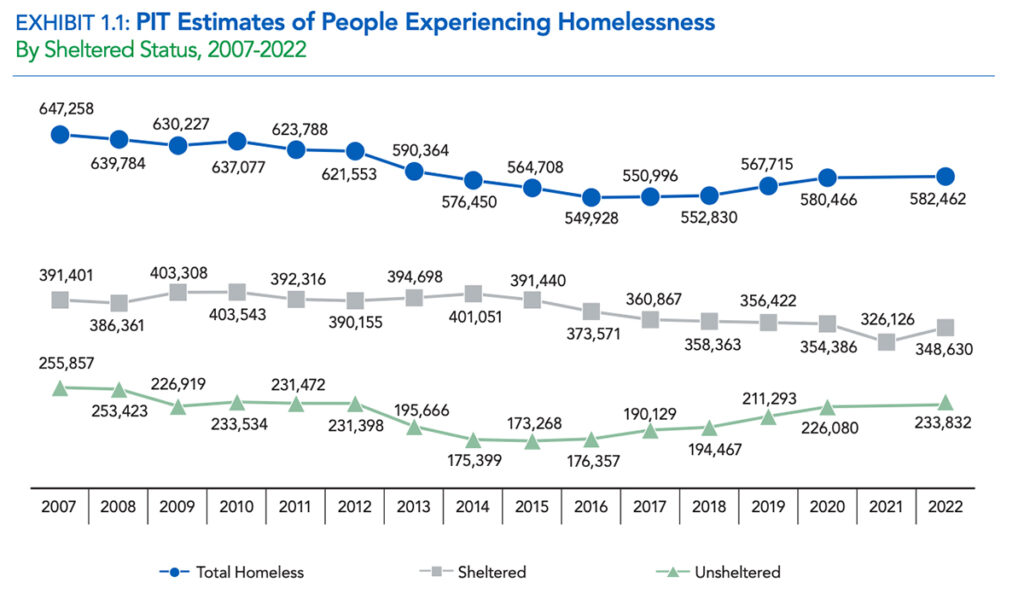
What has increased a lot in recent years are the numbers of the chronically homeless, which HUD defines as individuals with disabilities experiencing homelessness for long periods of time. Almost 22,000 more people since 2010 are now chronically homeless. (2010 is used as a comparison point as it is the first year that the federal government set a national goal to end homelessness.)
The report didn’t offer a specific explanation why, although they did make note of the rental market, as well as government funding and the federal eviction moratorium potentially buffering housing insecurity caused by the pandemic.
What’s curious is that the rise in the chronically homeless isn’t tied to a shrinking ability to give shelter and support. Since 2007, the US has almost quadrupled the number of beds available in what is called permanent supportive housing, long-term rentals where rental assistance is provided along with services like childcare, job and skills training, and substance abuse and mental health counseling. Almost half of the about 178,000 spots are dedicated to those experiencing chronic homelessness.
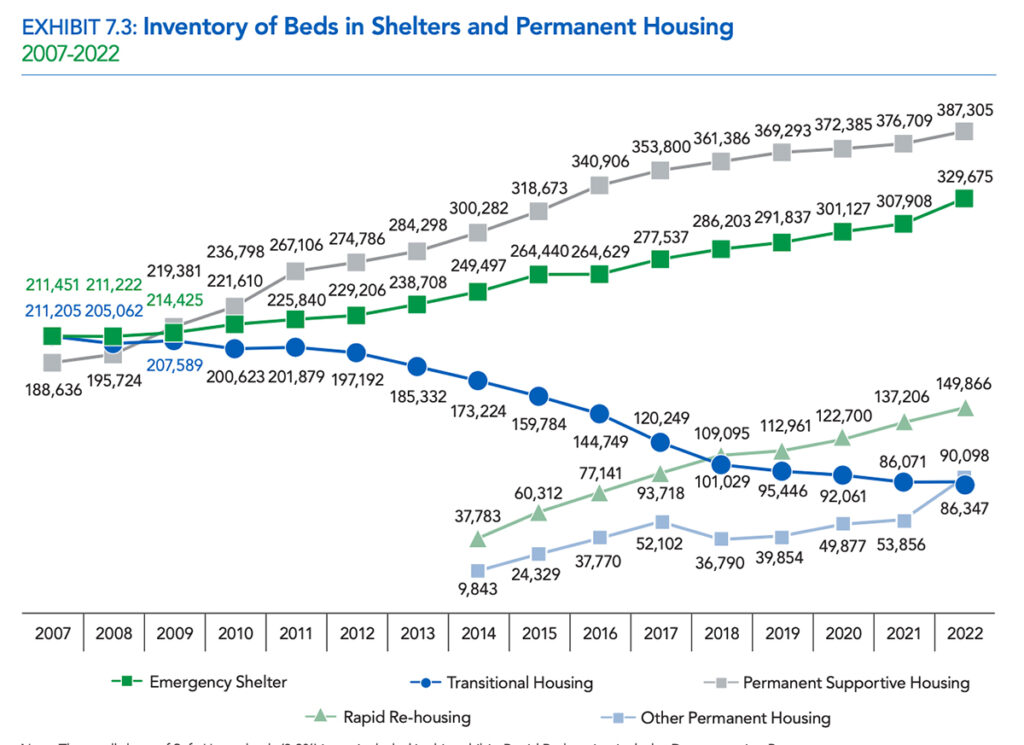
There are other improvements. Fewer families are homeless, down 36 percent since 2010, comprising almost 30,000 families. Among homeless families, fewer are unsheltered, meaning that they are sleeping on the street or in abandoned buildings. That heartbreaking situation is down almost 66 percent since 2010.
As we spoke about on the podcast recently, the number of homeless veterans has been cut by over half since 2010, with over 40,000 of them now housed. That was a particular focus of the Obama administration.
Youth homelessness is also down in recent years, although we can’t compare data from before 2017.
How anecdotal experience interacts with the federal statistics will vary for American readers depending on where they live. I wasn’t off in my assessment that homelessness in New York City has worsened, even if rates in the state are among the nation’s lowest. In terms of absolute numbers, more than half of the US’ homeless live in California, New York, Florida, and Washington. An astonishing half of all unsheltered people—those sleeping outside—live in California.
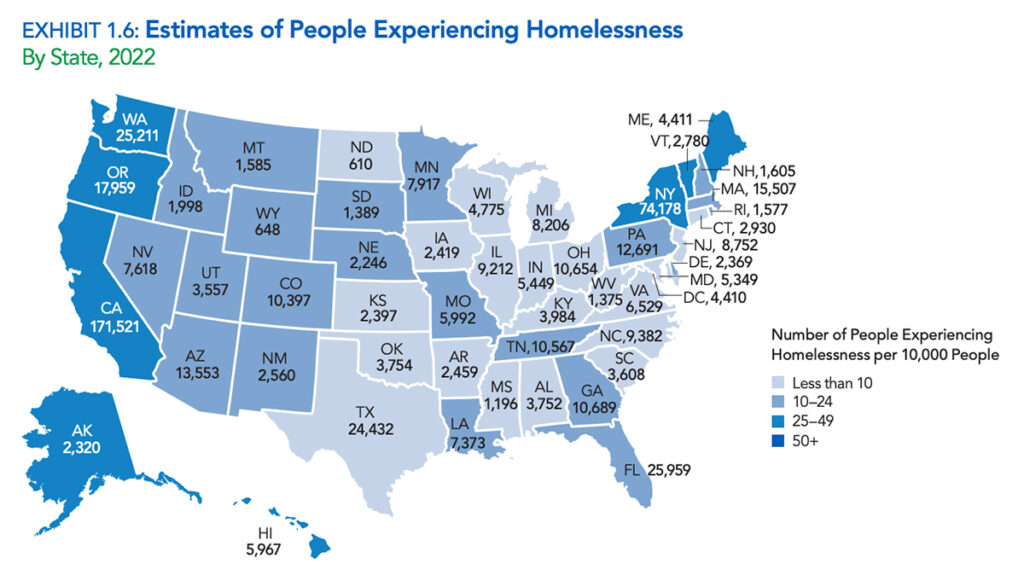
I had also assumed that the US has a homeless rate that far surpasses Europe’s. Again, it’s not that simple. A 2023 report from the European Federation of National Organisations Working with the Homeless (FEANTSA) put the minimum number of homeless people in Europe at 895,000, although they say the data is patchy. If the number is right enough, back-of-the-napkin math puts Europe’s rate at roughly .12 percent.
That varies widely by country. France, Germany, and Ireland all have rates higher than the US; France’s is over .3 percent. Then there’s Finland, a country of 5.5 million people, with around 3,700 homeless people total, which they brought down from around 17,000 in the 1980s. How did Finland do it? They built and converted housing specifically for homeless people, and use the Housing First approach—housing is provided before any other services, and without preconditions. Both the Obama and Biden administrations use(d) it, too.
Overall, FEANTSA expects homelessness in Europe to worsen due to energy costs, rent increases, and the influx of Ukrainian refugees that has put pressure on existing shelter systems. A commitment to end homelessness by 2030, signed in 2021, is the first time, the report says, that the bloc has shown “genuine political commitment” to assessing and solving the issue.
As for the US, the Biden administration’s 2022 goal was to cut homelessness by a quarter by 2025. As this Bloomberg article explains, much of that execution falls to local leaders. Recently, the media has singled out San Antonio, Reno, and Houston as success stories, and I would love to hear from any readers who have heard about others.
That homeless numbers are not spiking overall in the US does not necessarily mean that it’s unfair to label homelessness as a crisis. The modern era of homelessness is considered to have begun in the 80s—an accounting of the history is here—when numbers first hit the 500–600,000 range we are in now. (With a smaller overall population, roughly a rate of .22–.26.)
Perhaps we are still in crisis conditions, especially if we take Finland as our paragon of success! And for any one individual experiencing homelessness, no one would argue, of course, that it isn’t a personal crisis. But I continue to find that the reality of statistics is often at odds with narratives I’ve constructed in my head.
We will take another look at this when the 2023 figures are released.
You have told us that you’re frustrated by hitting paywalls and are overwhelmed by the number of links included in our weekly roundup. Starting in the new year, we will be experimenting with new formats to make the reader experience better. Have feedback? Tell us in the comments so we can incorporate it!
Quick hits
- Last month I wrote about a marriage equality bill under consideration by Thailand’s Cabinet. They have approved it, and it is expected to go to Parliament December 12.
- Some highlights from COP28, the annual international convening on climate change: the EU, UK, and US, have pledged $400 million to poor countries for “loss and damages” caused by global warming. The idea was first introduced thirty years ago, and has been unpopular in rich countries for nearly as long. And, more than 110 nations have committed to tripling renewable energy capacity by 2030.
Below in the links section, Native Americans build their own solar farms, gene therapy builds an immune system, Detroit builds an EV-charging road, and more.
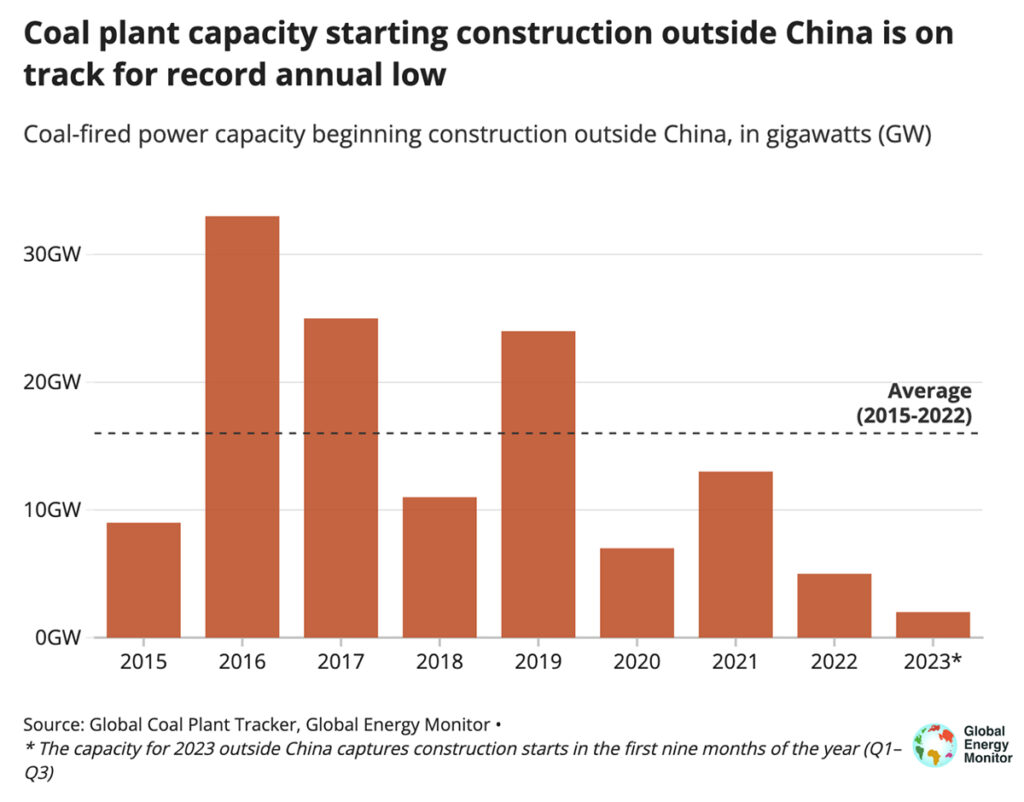
What Could Go Right? S5 E9
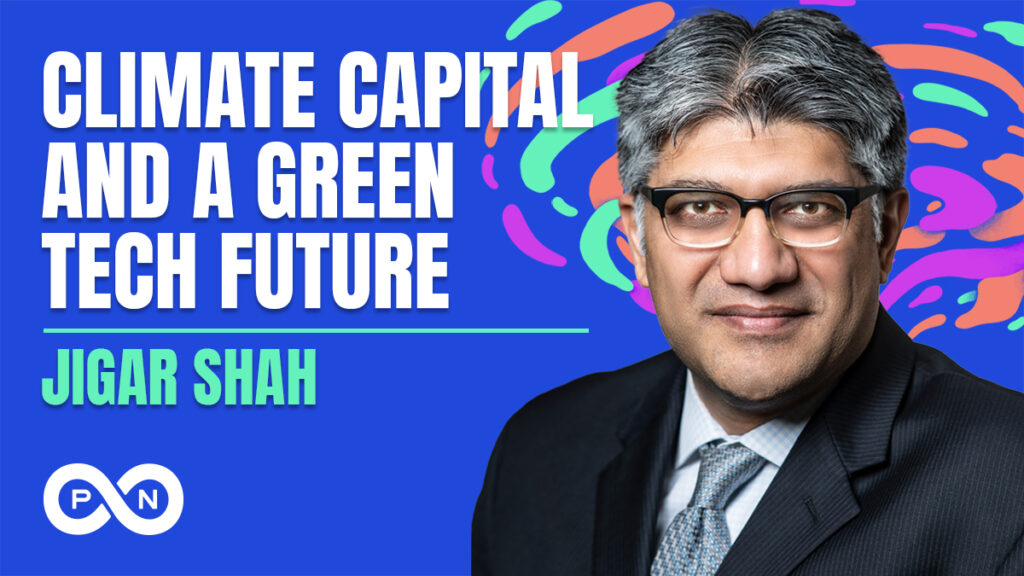
Will the green transition happen, and how far do we have to go? Jigar Shah, the director of the Loan Programs Office in the US Department of Energy, shares his insights into the current landscape, future potential, and challenges for the successful commercial deployment of critical clean energy technologies. | Listen to the episode
Progress, Please
(Found good news? Tweet at us @progressntwrk or email.)
Other good stuff in the news 🌲
Energy & Environment:
- Amazon rainforest destruction slows sharply year to date, report says | Reuters
- Tackling climate change and alleviating hunger: States recycle and donate food headed to landfills | AP
- Where the world is (and isn’t) making progress on climate change | The New York Times
- Native Americans are building their own solar farms | BBC
- Jakarta’s rapid transit buses are key to net zero ambitions and hugely popular | The Guardian
Public Health:
- This boy was born without an immune system. Gene therapy built one | The Washington Post
- Kenya spearheads malaria vaccine triumph | Africanews
Science & Tech:
- Detroit’s newest road can charge EVs as they travel on it | Axios
- Ozempic could also help you drink less alcohol | Wired
- Revolutionary earbuds to dramatically change life for disabled | Vancouver Sun
Politics & Policy:
- Cities must replace harmful lead pipes within 10 years under new Biden administration plan | AP
- Tanzania to complete rural electrification by June 2024 | The Citizen
- France to ban smoking on beaches and in public parks | CNN
- Sweeping bill to fight opioid addiction will be considered by US Senate health committee | Stat News
Society & Culture:
- Report: Belief death penalty is applied unfairly shows capital punishment’s growing isolation in US | AP
- Is shoplifting really surging? | The New York Times
Economy:
- Extreme poverty rate dropped faster than ever during the past decades | Gapminder
- Tajikistan’s poverty rate fell from 32% in 2009 to 13.4% in 2022 | World Bank
- EV registrations in Europe surpassed diesel for the first time | InsideEVs
- Eurozone inflation falls to within striking distance of 2% target | The Guardian
- A new age of the worker will overturn conventional thinking | The Economist
- Welcome to a golden age for workers | The Economist
TPN Member originals 🧠
(Who are our Members? Get to know them.)
- The debate that Israel needs over the war | Thomas L. Friedman
- Understanding the true nature of the Hamas-Israel war | Thomas L. Friedman
- Solving the social dilemma: Many paths to social media reform | Jonathan Haidt
- Cash transfers work | Matthew Yglesias
- What the printing press and stagnation in the Islamic world teach about AI | James Pethokoukis
- The Voting Rights Act challenge | Isaac Saul
- Three ways to tell if research is bunk | Arthur C. Brooks
- Tara Isabella Burton on the myth of self-creation | Yascha Mounk 🎧
- From CRISPR to cloning: The science of new humans | Ian Bremmer 🎧
Department of Ideas 💡
(A staff recommendation guaranteed to give your brain some food for thought.)
When work is play | Play Makes Us Human
To what degree does your job fit all the defining characteristics of play?
Why we picked it: The average person will spend up to 90,000 hours at work over a lifetime. As we move through December, a month of reflection for many, it is worth considering if our working hours are more parts play or toil, and how we might course correct if it’s the latter. —Brian Leli
New Member Alert

Baratunde Thurston is the host and executive producer of the PBS television series America Outdoors with Baratunde Thurston, creator and host of How To Citizen with Baratunde, and a founding partner of the new media startup Puck. His comedic memoir, How To Be Black, is a New York Times bestseller.
Until Next Time
Still looking for the perfect gift for the Homo erectus aficionado in your life? Look no further. ✋ 🪨



What I have been observing and what this report says have felt in conflict since first reading this article. Exhibit 2.1 in the 2023 PIT report tells a dramatically different, almost chilling story that explains the issue. People experiencing homelessness have risen dramatically over the pandemic and, drilling down into the 2023 report, the apparent problem with the 2022 report was from likely undercounting due to pandemic fears among the volunteers who do the counts.
I think that this newsletter article should be updated and passed on to the readers using the new data and a new analysis. It would seem pollyannish to ignore the mistake and not correct the analysis. Please preserve your credibility. I like this newsletter but won’t if I feel I have to regularly fact check it.
Hi Michael – yes, you are right! The 2023 data was much different than 2022’s. We wrote about the update in the January 18 edition of the newsletter, but need to append that note here as well, which I will do now. I used the data that was available at the time but should have waited until the 2023 data was released. This was written prior to that.